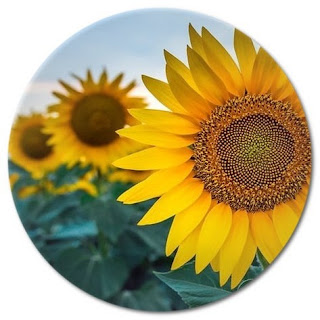Three Hundred Sixty-Five Days of Flowers
There isn't a specific flower that blooms for exactly 365 days, as most flowers have a specific blooming season that can last anywhere from a few days to a few months. However, there are certain flowers or plants that are known for having long-lasting blooms or continuous flowering throughout the growing season. Here are a few examples:
Roses (Rosa spp.): Some varieties of roses are known for their repeat blooming throughout the growing season. They may produce flowers in cycles, allowing for a more extended period of bloom.
Geraniums (Pelargonium spp.): Certain types of geraniums, such as ivy geraniums, are known for their continuous blooming habit. With proper care, they can produce flowers for much of the year.
Marigolds (Tagetes spp.): Marigolds are often prolific bloomers, and deadheading (removing spent flowers) can encourage continuous blooming.
Petunias (Petunia spp.): Many modern petunia varieties are bred for long-lasting blooms, and they can provide color throughout the growing season.
African Violet (Saintpaulia spp.): Indoor plants like African violets can bloom almost continuously under the right conditions.
It's essential to note that the longevity of a flower's bloom depends on factors such as climate, soil, care, and the specific variety of the plant. Additionally, perennial flowers may have a shorter blooming period each year but return in subsequent growing seasons.
If you are looking for continuous color in your garden, consider a mix of plants with staggered bloom times to ensure a succession of flowers throughout the year. Additionally, incorporating a variety of flowering plants with different bloom periods can create a garden that provides visual interest throughout the seasons.
Information about All Flowers
Providing information about all flowers would be an immense task, as there are thousands of flower species worldwide, each with its own unique characteristics. However, I can offer a broad overview of the types of flowers and some well-known examples:
Major Types of Flowers:
Angiosperms (Flowering Plants):
- The largest group of plants, they produce seeds enclosed in an ovule and are characterized by the presence of flowers.
Monocots and Dicots:
- Flowers are often categorized into monocots (e.g., lilies, orchids) and dicots (e.g., roses, sunflowers) based on the number of cotyledons in their seeds.
Well-Known Flowers and Their Characteristics:
Roses (Rosa spp.):
- Symbolize love and come in various colors and forms. They belong to the Rosaceae family.
Lilies (Lilium spp.):
- Diverse and beautiful, lilies have distinct petals and are often fragrant. They belong to the Liliaceae family.
Tulips (Tulipa spp.):
- Known for their cup-shaped flowers and vibrant colors. Tulips belong to the Liliaceae family.
Sunflowers (Helianthus annuus):
- Recognizable for their large, disk-shaped blooms with yellow petals surrounding a central disk.
Orchids (Orchidaceae family):
- One of the largest and most diverse families of flowering plants, known for their unique and often intricate flowers.
Daisies (Asteraceae family):
- Simple and cheerful flowers with a central disk surrounded by petals.
Lavender (Lavandula spp.):
- Fragrant, purple flowers often used in aromatherapy and culinary applications.
Cherry Blossoms (Prunus serrulata):
- Iconic flowers in Japan, known for their delicate pink or white petals.
Daffodils (Narcissus spp.):
- Spring-blooming flowers with a central trumpet-shaped corona surrounded by petals.
Lotus (Nelumbo spp.):
- Sacred in many cultures, lotus flowers have large, showy blooms and are often associated with purity.
Uses of Flowers:
Ornamental Plants:
- Many flowers are grown for their aesthetic appeal in gardens and landscapes.
Culinary Uses:
- Some flowers, like roses and violets, are edible and used in culinary preparations.
Medicinal Plants:
- Certain flowers have medicinal properties and are used in traditional or alternative medicine.
Symbolism and Cultural Significance:
- Flowers often carry cultural and symbolic meanings and are used in various ceremonies and celebrations.
This is just a small selection, and the world of flowers is incredibly diverse. Each flower has its own unique features, growing conditions, and cultural significance. If you have specific flowers in mind, feel free to ask for more detailed information! 365 day flovers >>





Comments
Post a Comment